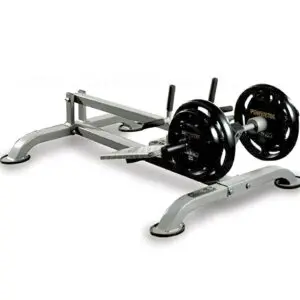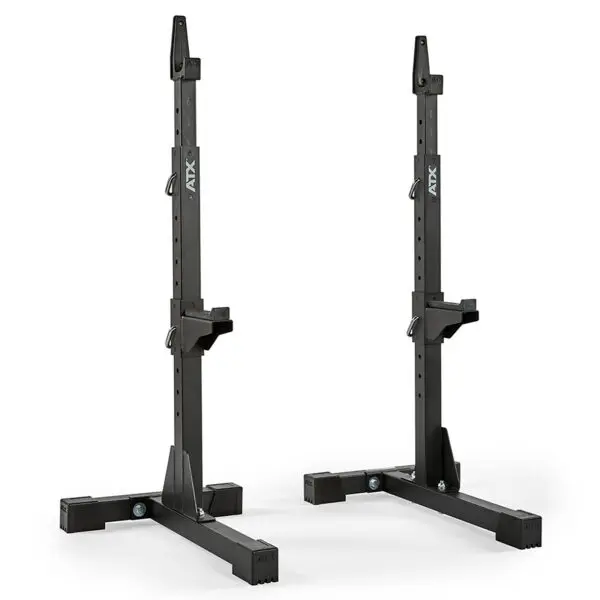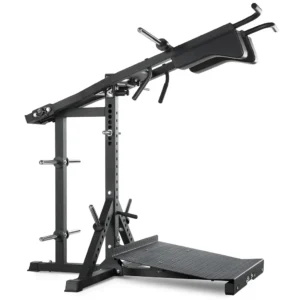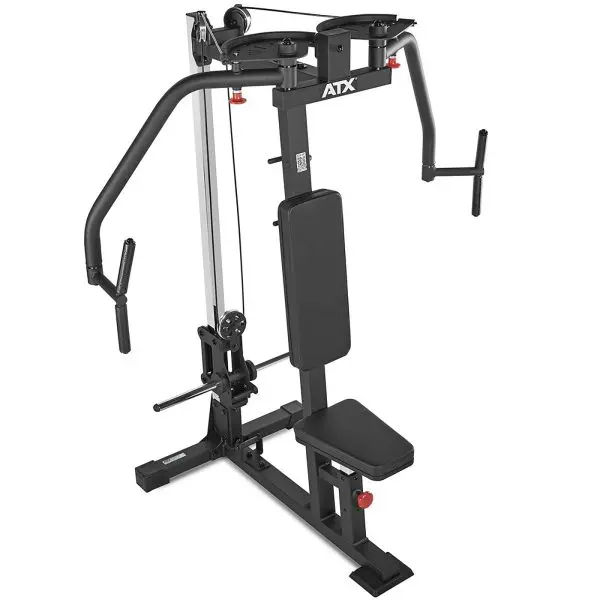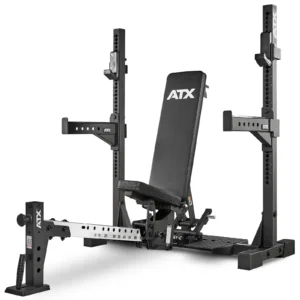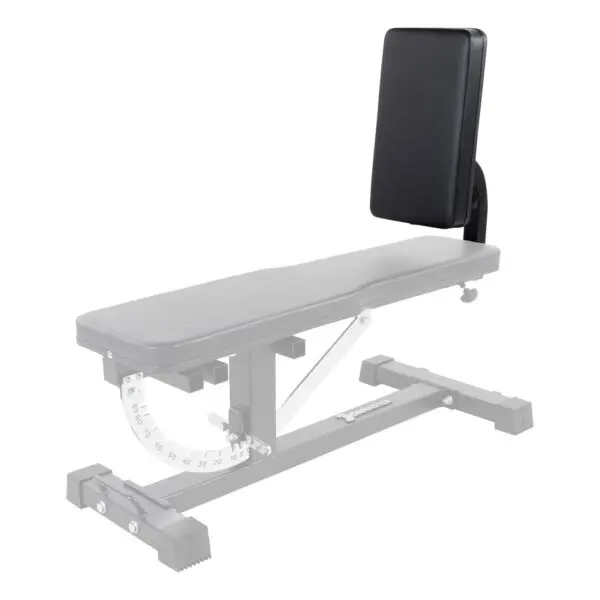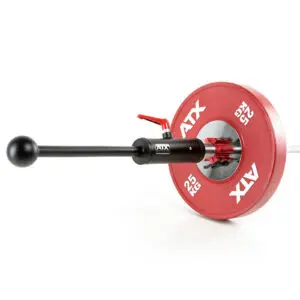
 SHOULDERS Exercises to Build the Best Delts
SHOULDERS Exercises to Build the Best Delts
Pressing for Performance not Pain

Best equipments for Shoulders
Shoulders
Frequently Asked Questions

 Can you break down the basic anatomy of the shoulders?
Can you break down the basic anatomy of the shoulders?
Before we dive into the shoulder exercises and equipment that will help you go from zero to hero in the shoulder department, I need to talk a bit about the make-up of our shoulders. After all, how do you know which exercises will get you ripped if you don’t know which muscles to focus on?
Let’s jump right in. Your shoulder muscles—also known as deltoids—have three parts: the anterior deltoid, medial or lateral deltoid, and the posterior deltoid. The anterior deltoid is at the front of your shoulders. You can work on this muscle by doing barbell shoulder presses. The medial or lateral deltoid is on the sides of your shoulders. Dumbbell side lateral raises are great for working this one. Lastly, the posterior deltoid is at the back of your shoulders. Bent-over dumbbell rows will get this deltoid fired up.

 How can I prevent muscular imbalance in my shoulders?
How can I prevent muscular imbalance in my shoulders?
Here’s an important safety tip: if you want to avoid muscle imbalance and injury further down the line, you need to treat all three deltoids equally. What I mean by that is you need to spend an equal amount of time working on each deltoid. If your focus is just your anterior deltoid, your shoulders will look very narrow from the sides. Not a pretty sight.

 What's the ideal rep range for shoulder exercises?
What's the ideal rep range for shoulder exercises?
Aim for between 4 to 5 reps of compound exercises and 8 to 12 reps for isolation exercises. Above all, do your shoulder exercises with the proper form because it will dictate the quality of results that you’ll get. Don’t complete your reps and finish your sets just for the sake of getting them over and done with. Focus on getting the perfect form first—you can worry about getting your reps up later.

 What are the best shoulder exercises and workouts?
What are the best shoulder exercises and workouts?
Now that we’ve gone over the basics of our shoulders, let’s talk about the exercises that will grow and strengthen them. I’m giving you a list of shoulder exercises that all levels of trainers—from beginner, intermediate to advanced—can do, but you need to decide which level you fall on. Don’t push yourself so hard that you end up injuring yourself, but don’t get slack about it either. Once your shoulder muscles are stronger, do another rep or move onto a more complex exercise. You can thank me later.
1. The dumbbell overhead press
This one is a great exercise for beginners who want to increase the stability and strength of their shoulders. It’s better to start with light dumbbells, but if you’re a seasoned trainer, you may start with dumbbells of moderate weight. You can do this exercise while standing or seated on a bench.
Hold a pair of dumbbells above your shoulders with your elbows bent and arms on your sides. Your palms should face the wall in front of you. Raise your arms over your head. Try not to move your back while you are lifting the dumbbells. Keep your spine as straight as possible. You might be tempted to arch your lower back, but try not to.
2. Alternating dumbbell front raise
This one is a bit more difficult than the previous exercise. Start by standing hip-width apart with your knees slightly bent. Hold a pair of dumbbells with your palms facing your thighs. Lift one dumbbell until your arm is parallel to the floor. Pause and then lower it again. Switch sides.
3. The pike push-up
Start off in a downward facing dog (an inverted V-shape) position. Make sure your legs and back are straight. Once your body is in this position, do a push-up (yes, you’ll definitely feel the burn on this one) by bending your elbows and lowering your head on the floor. Extend your elbows and lift your upper body, then repeat. You may lift your heels off the floor for a fuller range of motion. You can increase or decrease the difficulty of this exercise by moving your feet closer together or further apart. If you really want to get things moving, elevate your feet onto a platform and do the push-up from there.
4. The plate ground to overhead press
Place a thick weight plate on its side and then stand over it with your feet hip-width apart. Bend down at the hips, keep your back straight, grab the sides of the weight plate and then lift the plate above your head. The moment the weight makes it past your face, flip it so your thumbs are underneath. When you’re bringing it back down, reverse this grip so your thumbs are in front of the weight plate.
5. Dumbbell shadow boxing
Now let’s move onto the more difficult exercises. This exercise (and the ones that follow it) are for the more experienced, so don’t feel down if you can’t do them right off the bat.
A fantastic and fun way to work your shoulders is to add dumbbells to your shadow boxing routine. You’ll want to start with light weights because you’re aiming for high reps.
Hold your dumbbells at shoulder height and throw a punch with one arm. Make sure you completely extend this arm, then bring it back to the starting position. Bring this arm back as you punch out with the other arm.
At first, your shadow boxing moves are going to be pretty straightforward, but once you gain a little more experience, you can do other boxing moves with more flair in them.
6. The Arnold press
I love just about anything with Arnie’s name attached to it, including the Arnold press. Start by standing with your feet hip-width apart and your core tight. Hold and lift two dumbbells, palms facing towards you and elbows bent. Keep the dumbbells in front of your shoulders. Rotate the dumbbells as you move them sideways and then raise them up until the weights are above your head. Your palms should be facing the wall in front of you. This is a really great exercise if you want to hit all your delts!
7. The battle rope power slam
This one is great for two reasons: it will give you shoulders like a bodybuilding champion, and it will make you look pretty badass. To start, stand with your feet about shoulder-width apart. Keep your knees bent and hold a battle rope in each of your hands. Raise them above your head and then slam them down with all your power before lifting them up again and repeating the movement. Speed and power is what you should aim for in this exercise. Try to do this for one full minute.

 What's the best fitness equipment for my shoulders?
What's the best fitness equipment for my shoulders?
Now that we have covered the exercises that will develop your shoulders to become strength powerhouses, let’s move onto the equipment that will help you along the way.
There are so many amazing shoulder exercise equipment out there that I had difficulty narrowing them down! Some are perfect for home gym owners, while others are best left for commercial gyms. Anyhow, let’s get going. Here are my picks for the best shoulder equipment on the market:
1. Dumbbells
I have plenty of reasons why I placed dumbbells right at the top of this list. These weights are just so versatile! You can do so much with them that they’re practically irreplaceable in any gym. If you’re still trying to decide whether to get dumbbells or not for your gym, you might want to get yourself checked. Once you’ve decided to get dumbbells, the only question you should be asking yourself is, which ones?
2. The cable shoulder press
If you want to blast your anterior deltoids, this is the machine for you. Now, if you don’t have access to this machine, you can do the same movement with a barbell or dumbbells instead. The benefit of using this machine is it can help you do the exercise with the right form. It combines the benefits of free weights with the structure and safety of a machine, so your risk for injury is lower, too.
3. Machine shoulder press
This machine works just about every muscle of your shoulders, so it’s great for those who want to do compound exercises. Of course, you can use a barbell as an alternative, but with the machine shoulder press, you won’t need a spotter. The weights are also adjustable, so you can decide whether to go heavy or light.
4. The bench
A sturdy workout bench is a must for shoulder workouts, whether you’re pushing weights or doing raised push-ups. A good bench needs to be big enough for you to lie down on, so pay attention to the specs, especially if you’re buying one online.
If you have extra cash lying around, I suggest you invest in an adjustable bench instead of a traditional/flat bench. Adjustable benches give you the option to do your workouts from an incline or decline position, which is great for exercises like the dumbbell incline row and other shoulder-and-chest exercises.
5. The barbell
Before you buy the first barbell you see on the store or online, it’s always a good idea to test out the different types of bars first so you don’t end up with buyer’s remorse. You also need to know your strength level before you get a set of weights for your barbell. This will help you decide how heavy you can lift at the moment, and how much additional weight you should get so you can push yourself to grow stronger. A barbell will definitely help you sculpt those delts but before you slap on all those weights to your bar, make sure you have a spotter.
6. Battle ropes
I shared with you how to do the battle ropes power slam exercise a minute ago. If you think this exercise is something worth including in your shoulder workout, then you need to invest in some of these ropes.
7. Kettlebells
It is the strange shape of kettlebells that makes them great for your core stability and strength. If you’re working your shoulders, it’s your rotator cuffs that will really benefit from a kettlebell workout. A solid rotator cuff will not only improve your strength but also prevent you from suffering injuries.
8. Medicine balls
These heavy-duty balls are perfect for slamming because they don’t bounce or roll away. Yes, I said slamming. This is probably one of the most fun ways to work your shoulders. Just pick up a medicine ball, extend your arms and body upwards and then slam that ball into the floor. Be careful not to let the ball hit your feet!
9. Yoga mat or exercise mat
There are plenty of shoulder exercises you’ll be doing on the floor, so it helps to have a comfortable mat beneath you.
And there you have it! I just shared with you everything you need to turn your shoulders into the power machines they were designed to be. Just make sure you listen to your body and perfect your form before adding heavy weights or reps to your routine. Shoulder injuries can be very serious and they can set you back a lot farther from your goal. Just take your shoulder workouts nice and slow and in time, you’ll have shoulders that are strong enough to either carry the weight of the world or the bloke from your gym who benches 150kgs!

 How to get Broader Shoulders?
How to get Broader Shoulders?
There are two elements which are required to get broader shoulders – muscle mass and low body fat.
In your pursuit of Coconut Shoulders you should be focusing on the three muscle heads:
1. Anterior Head (Front Delt) – typically the largest muscle head out of the three. You use your front delts whenever you move your arm in front of you. It gets the most work during shoulder presses, front raises, and chest presses.
2. Lateral Head (Medial Delt) – usually slightly smaller than the anterior head. This muscle head gets the most work during exercises such as lateral raises, upright rows, shoulder presses. It is also involved in movements which require shoulder stabilization such as overhead presses.
3. Posterior Head (Rear Delt) – the smallest muscle head of the three. This muscle head gets the most work during exercises like reverse-fly’s, face pulls and bent-over lateral raises. Rear delts are also extremely important at maintaining a proper posture.
You can probably see how front delts get overdeveloped while the rear delts start lagging. You will find bench press and shoulder press in pretty much everyone’s training routine, while rear delt fly’s and face pulls are a rare sight.
To build broader shoulders and get that coconut look, you will need to add those rear delt exercises into your training routine.
Bodybuilding can be the art of illusion. Bodybuilders throughout the ages have used all sorts of tricks to give the illusion of size. To make their shoulders, chest and back appear bigger they aim to keep their waste small. This accentuates the muscle.
You could have some really developed shoulders but if you have the profile of a double door fridge they aren’t going to pop. If you really want to look broad, work on the shoulders, but keep your waistline in check too.

 Can I train Back and Shoulder together?
Can I train Back and Shoulder together?
Of course! In fact, a lot of the exercises which target the back also work your shoulders. Such as rows, pullups, and face pulls.
Additionally, shoulder exercises such as overhead presses, lateral raises and rear delt fly’s also work your upper back muscles.
To get the most out of training both your back and shoulders in a single workout try focusing on the larger muscle groups first as they will need the most effort to fatigue them.
Before starting any exercise make sure that you take your time to warm up properly. Ten minutes spent warming up can save you months of rehab!

 Can I train Chest and Shoulders together?
Can I train Chest and Shoulders together?
Chest and shoulder split is one of the most popular muscle group combos out there. Both muscle groups are involved in pushing movements and many exercises target both chest and shoulder muscles.
Whenever you are training chest and shoulders together you should be cautious not to overtrain certain muscle groups. Take the front delt as an example, it will get a lot of work during bench press and even more work during shoulder press.
That is why you should vary your exercises to target different areas of your chest and shoulders so that you could achieve optimal muscle development and avoid muscle imbalances.
If you were training chest and back together you would not do front raises which target the front delt. An exercise like face pulls that target the rear delt would be a wiser choice.

 Can I train Legs and Shoulders together?
Can I train Legs and Shoulders together?
Absolutely! This type of training split is usually called upper body/lower body or push/pull/legs.
It helps you to save time as you are training two major muscle groups together. It offers an increased calorie burn as leg exercises can be quite taxing.
Training legs and shoulders together also offer a bit more balance. As you are training both the upper and lower body in the same workout. This can improve your overall strength.
The most common reason why people choose to combine leg and shoulder exercises in one session is variety. Training different muscle groups in the same session can make your workout more interesting and engaging. You will not have time to get bored or distracted.
If you are time poor it makes sense to hit two body parts in the same workout.

 Can I train Shoulders everyday?
Can I train Shoulders everyday?
It is not recommended to train any muscle group every day. You can only train as hard as quickly your body can
recover.
The older you get the harder it is to recover. The quality of your sleep and nutrition are also factors in recovery.
Training a specific muscle group everyday can lead to muscle fatigue, injury, and decreased performance.
For the best results space the same muscle group workouts at least 48 hours apart. Make sure that you get enough nutrients and sleep to repair the muscle tissue. If your shoulders are still sore from the last workout, give them a rest so you can blast them hard!

 Does Bench Press train Shoulders?
Does Bench Press train Shoulders?
Yes, it does! While the bench press primarily targets your pecs and triceps, your anterior deltoids (front delt) take a lot of the load too. That is why most of the bench press enthusiasts have overly developed front delts.
In saying that bench press alone won’t build you great front delts. You will need to add a bunch of accessory exercises to maximize your gains and have a complete shoulder development.

 How to Train Front Shoulders?
How to Train Front Shoulders?
While your front delts aka Anterior Deltoid gets a fair amount of work during bench press, you will still need to add a few additional exercises so that you could get those Coconut looking shoulders.
1. Shoulder press (standing or military press) is commonly regarded as the best exercises when it comes to building up your shoulder strength. The only downside of this exercise is that it requires great shoulder mobility. If you are lacking in this department, you can injure both your shoulders and lower back.
2. Seated Shoulder Press – does make growing your front delts a tad easier, but it still leaves a lot of room for injury for those who have been skipping mobility exercises.
3. A safer option would be an Incline Shoulder Press is performed with the bench being on a steep incline, which makes the bar easier to control as well as less taxing on your shoulders.
4. The Smith Machine Shoulder Press/Incline Shoulder Press has been one of my favourite shoulder exercises. The problem with shoulder training is that your stabilizers can only take so much. Smith machine pressing does the stabilizing for you and all you have to do is push!
5. THE VIKING PRESS – I must thank ATX for releasing the Lever Squat Calf/Viking Press Combos. As they have been game changers for my shoulder workouts. The arms move in a semi-circular motion, which mimics the movement of a correct barbell shoulder press (you get under the bar at the top of the movement).
This combined with the fact that you can go heavy has allowed many to train past their limits. When doing a standing shoulder press with the barbell, you could potentially drop the barbell on to yourself. The ATX Viking Press has a safety stop mechanism which takes this misfortune out of the equation.
6. Lever Shoulder Press – The movement itself is quite like the Viking Press, with the key differences being back support. Plus, you also have the ability to change the angle of the backrest pad. This allows you to find the perfect position based on your mobility/joint levers.
7. Front Dumbbell/Weight Plate/Cable Raise – The exercise itself is very simple in execution. Grab a dumbbell or weight plate. Keep your hands fully extended and lift the weight up to around your chin level. Then return to the starting position. Just avoid using momentum as it will not give you any benefit outside of making it easier to move the weight.

 How to train Shoulders with Dumbbells?
How to train Shoulders with Dumbbells?
Dumbbells must be one of the most versatile pieces of gym equipment available. You can target every single muscle group in your body just with a pair of dumbbells.
The shoulder exercise list below perfectly demonstrates how functional dumbbells can be:
1. Dumbbell Shoulder Press
2. Seated Dumbbell Shoulder Press
3. Seated Incline Dumbbell Shoulder Press
4. Side Lateral Dumbbell Raises
5. Front Dumbbell Raises
6. Bent Over Rear Delt Dumbbell Fly’s
7. Dumbbell Shrug
8. Dumbbell Upright Row
9. Seated & Bent Over Rear Dumbbell Fly’s
10. Leaning Dumbbell Side Lateral Raises
11. Arnold Dumbbell Shoulder Press AKA Arnold’s Press
12. Lee Priest Shoulder Press
12.5 BMG’s Bent Over Dumbbell Shrug
13. Bent Over Dumbbell Face Pull
14. Dumbbell Push Press
If you are just starting out, don’t trouble yourself with complicated training programs.
Just pick a single compound shoulder exercise such as Dumbbell Shoulder Press and do your best to perfect the form.
In the beginning it is all about conditioning your body to the movement, this means that you need to develop mechanical memory as well as the mind-muscle connection.
Once you’ve mastered one exercise add the other. Change the exercises up once every 8-10 weeks so that you could get the most out of your training and avoid developing muscle imbalances.

 What causes Rounded Shoulders?
What causes Rounded Shoulders?
No matter how much you practice good posture you will not be able to overcome muscle imbalances just by occasionally remembering to pull your shoulder blades back.
Most people develop rounded shoulders due four main reasons:
1. Bad posture – bad posture weakens the muscles because it puts strain on certain muscles while not engaging the others. Over time this leads to muscle imbalances and muscle weakness.
2. Weak rear delts – rear delt muscles are a small muscle head located at the back of your shoulder. It doesn’t get as much use as the other two muscle heads during regular weight training. This can lead to shoulder instability, poor posture, limited shoulder mobility and shoulder muscle imbalances.
3. Overdeveloped/tight pecs – when pecs become too tight or are a tad stronger than your traps, they will pull your shoulders forwards which will cause a rounding of your shoulders and upper back.
4. Lack of Shoulder Mobility – if the shoulder cannot move through its full range of motion during training it will recruit other muscle groups to complete the movement. This will not only make your rounded shoulders worse but will also lead to more muscle imbalances.

 How to Fix Rounded Shoulders?
How to Fix Rounded Shoulders?
Fixing rounded shoulders is not as difficult as one might expect. All you need to do is identify the root cause of the issue and then add relevant exercises to fix it.
First, you will need to start stretching.
Tight pecs are one of the key issues which causes rounded shoulders. You can stretch your pecs by performing the doorway stretch.
Stand in the doorway and place your forearms on the doorframe at your shoulder height.
Lean forward slightly until you feel a light stretch in your pecs and shoulders. Hold this position up to a minute. It is important to remember that you shouldn’t fight through pain, do not place too much strain on the muscles.
It took you years to develop rounded shoulders and you simply cannot undo this in just a couple of weeks. Stretch all the time. The quicker you get used to and make it a habit the sooner you will experience the benefits. It will not be a chore then.
Secondly you will need to add a couple of accessory exercises to your training routine to address the muscle imbalances.
The rounding of shoulders and upper back is usually caused by weak trapezius and rhomboids as well as non-existent rear delts.
The first accessory exercise is face pulls which you should do at least twice a week. It strengthens your rear delts, traps, rhomboids, and rotator cuff muscles.
1. Set up a cable machine with a rope or use resistance band at about the height of your head.
2. Grab the rope or the resistance bands with an overhand grip (palms facing down), your hands should be positioned slightly wider than your shoulder width.
3. Take a couple of steps back to create tension in the cable/resistance band. You should aim for constant tension. Your arms should be fully extended and your feet should be shoulder width apart.
4. Tense your core to create stability in your body and pull the rope towards your face. Retract your shoulder blades back and drive your elbows out to the sides. Your hands should end up at the sides of your face with your upper arm being parallel to the ground.
5. Make sure that your thumbs are pointing behind you and not towards your ears.
6. Squeeze your shoulder blades together at the end of the movement to fully engage those back muscles.
The second exercise is for the most neglected shoulder head out there – the rear delt fly.
The movement itself is very similar to pec fly’s, it’s just done with you facing the cable machine/resistance band attached to the upright or bent over.
This exercise can be quite tricky to perform on most cable machines, as ideally you would need two pulleys being positioned close to each other. This is where the ATX-FTX-2000 Single Cable Station comes in real handy.
1. Set the cable pulley/resistance band up at around your shoulder height.
2. Remember that rear delt is a small muscle, so try using as little weight as possible.
3. Grab the D-Handles with a neutral grip (your palms facing each other).
4. Keep your elbows up throughout the whole movement.
5. Pull your arms back with your elbows being slightly bent.
6. The easiest way to visualize this movement is to think that you are hugging a tree – your arms move in an arc as opposed to being pulled straight back.
7. Bring your arms all the way back and try tensioning your shoulders for that peak muscle contraction.
8. Repeat for 12-15 repetitions for 3-4 sets. Rest up to 60 seconds in between sets.
The bent over variation of this exercise is very similar to the cable/resistance band one.
You can use light dumbbells or fractional weight plates for this variation. It can also be performed on an elevated bench, assuming you have enough clearance.
1. Bend over until your torso is parallel to the ground.
2. Bend your knees and straighten your back.
3. Try visualizing hugging a tree – your arms are moving in an arc, with your elbow being flared up.
4. Squeeze your shoulders at the top of the movement.
5. Control the weight on the way down.
6. Repeat for 12-15 repetitions for 3-4 sets. Rest up to 60 seconds in between sets.
You can add rear delt fly’s to your back/upper body days. While face pulls can be performed during any workout as you can never have too healthy shoulders.

 How many Shoulder Exercises should you do?
How many Shoulder Exercises should you do?
It all depends on where you are with your training. When you are first starting out, you don’t have much to worry about as all three muscle heads are weak. Your primary goal then is to build up muscle mass.
After training for a little while you can start thinking about introducing additional accessory exercises, which could put more strain on the specific muscle heads.
And once you’ve reached the so-called plateau, you can investigate maximizing your shoulder training by looking at the areas where you want to and need to improve the most in order to progress with your training.
Beginner lifters could get away with just should press. Especially if you are doing a full body or upper/lower body split. If you want to learn some more exercises add another one or two. This would allow them to focus on proper form and technique while gradually building up the base strength.
Intermediate lifters can up the number up to 3-4 exercises per training session. The additional exercises allow the lifter to have a bit more variation in their training. They can focus on building up individual muscle heads such as the front, medial and rear delts.
Advanced lifters could use as many as 5 shoulder exercises in a single workout. This would allow the more experienced trainer to focus on the weaker/lagging muscle heads. The typical workout would include a mixture of a compound movements and isolation exercises. Such as Dumbbell Shoulder Press and lateral raises, front dumbbell raises, rear delt fly’s etc.
Shoulders Training Tips


Beginner Weight Training Tips
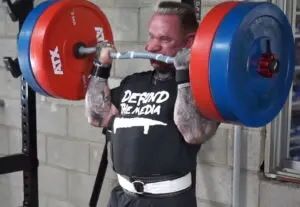
25 EZ Curl Bar Exercises
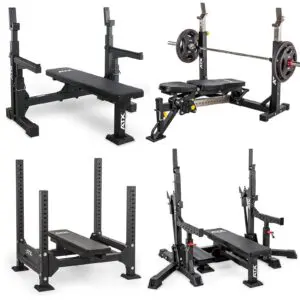
Bench Press Buyers Guide – Incline, Decline, or Flat
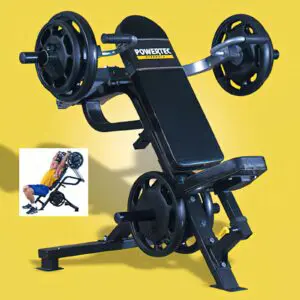
L-SP Powertec Leverage Shoulder Press
